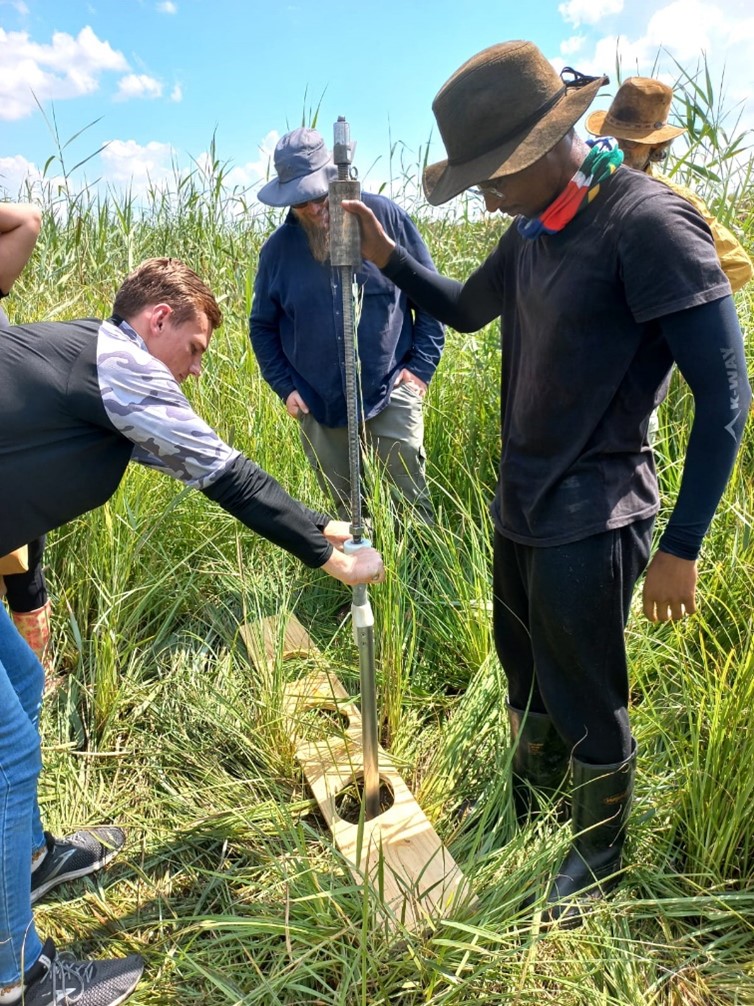Holocene paleoecology of a wetland at the spring of the Mooi River
Coert Coetzee (Hons)
Supervisor: Prof Frank Neumann
Co-supervisor: Ms Moteng Moseri
Commenced 2022
Rationale
Peat is deposited over millennia, as this deposition occurs a record of condition from each time period is preserved. Using multiple proxies (pollen, diatoms, charcoal remnants and sediment grain size as well as pXRF) it is possible to infer past environmental conditions. Using pollen, it is possible to infer the composition of the adjacent natural vegetation as well as to determine if any crops were planted or weeds were introduced. Diatom analysis will allow for determination of water quality and the possible impact of eutrophication which may have accompanied the expansion of Iron Age farming and pastoralism. Sediment grain size as well as pXRF will be used to infer the prevailing hydrological regime during the deposition period of the core sediments.
Objectives
- To determine changes in land use practices during the Holocene period in the catchment of the Mooi River.
- To collect a sediment core and classify different layers in terms of colour, texture, and grain size
- To determine the plant species (population and diversity) that prevailed in the surrounding area by identifying associated pollen in different sediment layers
- To identify the quality of the water system (degree of eutrophication) over the time period of sediment deposition by analysing the diatom species preserved
- To determine the chemical composition of the sediment layers through pXRF
- To understand the physical hydrological characteristics and development of the water system through particle size analysis of the different sediment layers
Expected outcomes
Insight into the historical ecological setting for the environment which includes climate history, plant species, hydrology, diatoms, and early Iron Age farming/pastoralism activities
Benefit to interdisciplinary objectives of the UESM
The study will be conducted by staff and students from the Schools for Geology and Botany and will include surveys of recent vegetation (collection of plant matter for herbarium, pollen collection), diatoms, sediment deposition, hydrological settings which are fields included in different schools within the UESM.
Project status
Completed
Results were reported at the GSSA 2023 conference in Stellenbosch.
No results available on website yet.
 |
 |
| Coert Coetzee (left) extracting core material from a peat wetland during one of the METSI field campaigns in March 2022. His research will focus on the analysis of palynomorphs macerated from the sediment cores to reconstruct the palaeoenvironmental conditions and the influence of human activity on the peat wetland at METSI, in Potchefstroom. |
